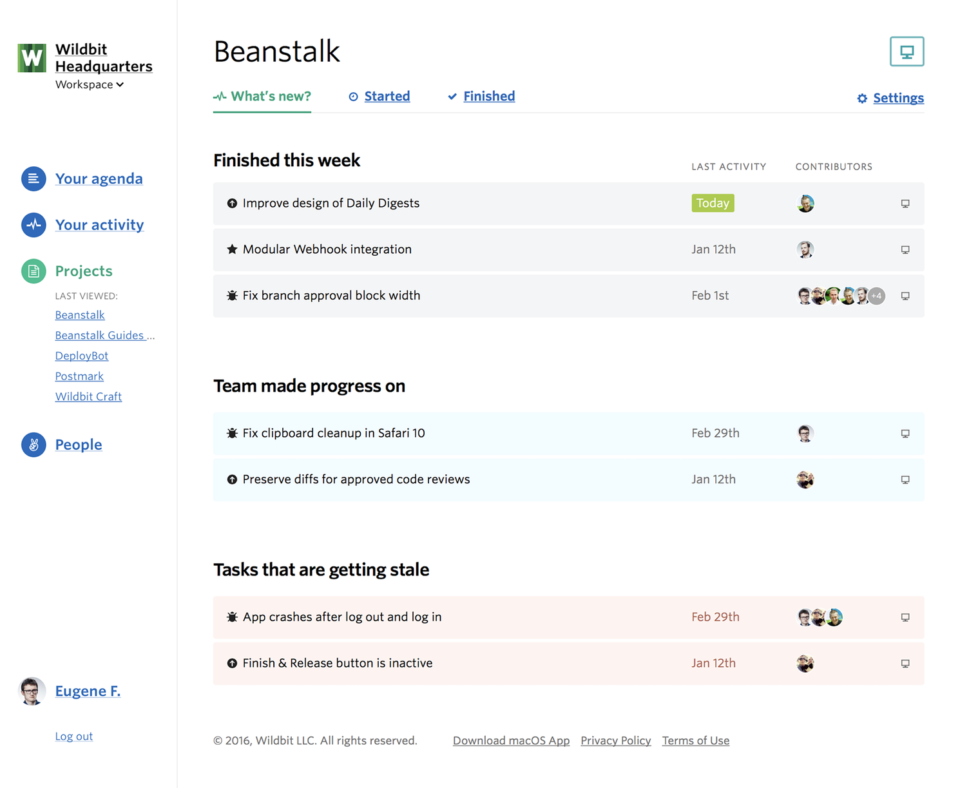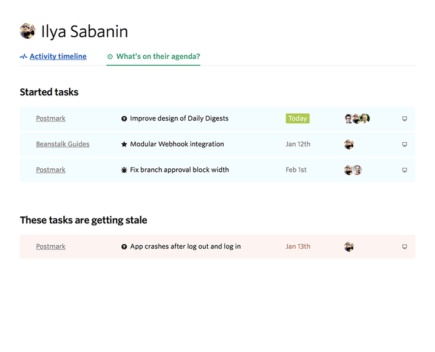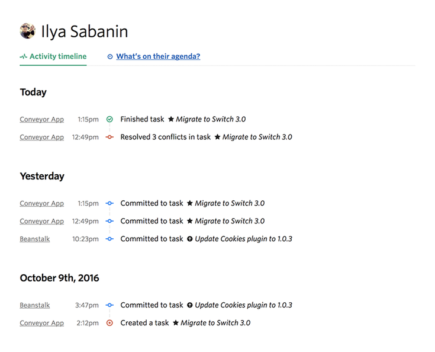After much consideration, and a few conversations, we've decided to shut down Conveyor. We'll begin the process on September 1, 2020. Thank you again to all the people who shared their feedback or time with us!
We’ve already talked about Conveyor’s built-in process, and how it will help your team focus on writing great code. But there are other moments during the development process where teams feel a lot of pain.
With Slack, Trello, Basecamp, Jira, email, and so many other ways to communicate, it’s tough to keep everything in one place. How can Conveyor help you to stay afloat when there’s so much going on?
The pain points
Even teams with a fluid process can struggle with staying on top of things. Last spring, we interviewed team leads from teams of different sizes and workflows. We heard about a lot of different pains but there was one consistent theme echoed by all:
There’s so much going on, I can barely stay on top of everything.
We wanted to know more. With so many tools to keep teams connected, why do we often feel overwhelmed? We also heard comments like these:
- I constantly feel overwhelmed
- There are too many tools to keep on top of
- It’s hard to keep clients updated and on track
- I need tools that give our non-technical team members project visibility, without me holding their hand
Project managers wanted to see where they could help or remove obstacles. They also wanted to ask better questions less often about progress and the current status of the project. And senior developers wished it were easier for teammates to report what they're working on and if they're blocked.
There are products that help with these problems, but it’s tough to keep everything in one place. Conveyor provides the context you need so that you no longer have to reference outside tools to do your job.
Less tools
Development today requires a huge mix of tools. Project managers rely on developers to update tickets and get visibility into projects. And developers perform a lot of manual work so that project leaders know what’s going on. This is a messy process.
And instead of focusing on getting work done, there’s a constant need to synchronize tools to make everyone happy. Services like Beanstalk and Github extract Git to make it useful. But there are still moments when a developer has to run commands to get specific information.
Conveyor solves this by merging project management with version control. It uses data from the underlying Git repository and translates it into usable information that nontechnical team members can digest.
We love Git at Wildbit. But to take advantage of all that it offers requires familiarity with its advanced concepts. With Conveyor, we abstracted Git and built a service on top of it. Now, all team members can benefit without knowing the technical specifics of Git.

Less Guesswork
As stated at the outset, it's hard for team leads to stay on top of things. They depend on junior or senior developers to update tickets and other tools to know what’s going on. Here are a few examples of the type of questions some team leads face daily:
- What is developer X working on and how close are they to completing this task? Maybe I should schedule a call with them?
- Is someone on the team blocked from doing their work? Are they waiting for me to give them more information?
- Should I check in on developer Y? It’s been a while since I’ve heard an update from them.
It’s difficult to find the answers to these questions while staring at a wall of commits inside of a repository. And if a developer forgets to update a ticket or discussion in a project management tool, things can get out of sync fast. With Conveyor, this will never happen.
Conveyor provides a more accurate view of the current status of a team’s workload. That’s because all changes made in the client reflect in the web application as it happens. Instead of trying to interpret what inspired a commit, or what branch it relates to, Conveyor shows you the related task and details on why it happened.
On top of Conveyor’s task-based workflow, we’ve added our own layer of metadata to each Git repository. Now developers can work on their repository, without having to update tickets in another service. And managers have a clear vision of where things are because Conveyor provides the answers before they become a question. This removes unnecessary communication and mundane tasks by providing the context of what’s happening right out of the box.


Not only does Conveyor provide automatic insight into projects, but it also categorizes tasks based on its progress.
For example, Conveyor has what we call stale tasks.
This happens if a developer starts working on a task but stops for one reason or another. Team leads can see that the task is stale and start a discussion with the developer within Conveyor. Now instead of wondering what happened with a task, you can provide the help they may need to finish the job.
What makes Conveyor different?
Conveyor isn’t another development workflow that integrates with the latest PM tool. It’s a process that eliminates the constant stream of maintenance by keeping everything in one place. Instead of updating several different tools, Conveyor automates this process for you. In a sense, Conveyor updates you of the latest changes, and not the other way around. This way, tasks and issues will finally live where they belong: alongside your code and not in other tools.
So far in this blog series, we’ve discussed how Conveyor allows you to:
- View the journey of a task from start to finish as it happens. No more updating issue trackers or PM tools.
- Onboard new teammates faster with our built-in workflow.
- Use a workflow that takes care of the small details in Git, so you don’t have to.
- Use a language that everyone can understand.
These are only a few of the pains Conveyor will solve.
We created Conveyor so that teams can focus on building products instead of managing processes and tools. It provides a more accurate project history by fusing project management with version control. It’s our goal for Conveyor to remove these low-level problems so that you can do your best work.
Curious about anything we mention here? Let us know on Twitter — we'd love to hear what you think!
Want to get early access to Conveyor? Sign up to join the beta list

